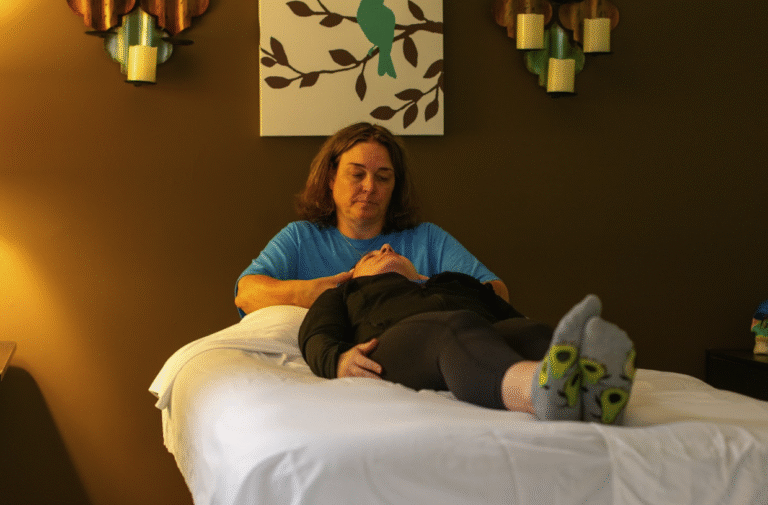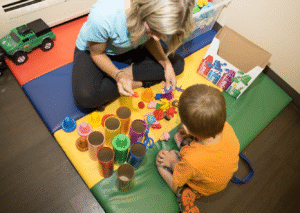Craniosacral Therapy in Neurological Rehabilitation
Neurological conditions can change daily life in profound ways—affecting how a person moves, communicates, processes information, and interacts with the world. At Crawl Walk Jump Run Therapy Clinic, we know that healing is never one-size-fits-all. While physical, occupational, and speech therapies are the foundation of neurological rehabilitation, many patients and families seek safe, complementary approaches that support the body’s natural ability to heal.
One therapy gaining attention is Craniosacral Therapy (CST), a gentle, hands-on technique that may help reduce tension, regulate the nervous system, and enhance outcomes when paired with traditional care. For patients and families navigating neurological conditions, CST can be an empowering tool to feel more comfortable, calm, and engaged in recovery.
What Is Craniosacral Therapy?
Craniosacral Therapy is a light-touch manual therapy that focuses on the craniosacral system, the membranes and cerebrospinal fluid that surround and protect the brain and spinal cord. Using subtle movements and gentle pressure, trained CST practitioners aim to release restrictions, restore balance, and encourage the body’s natural healing processes.
Unlike massage or chiropractic adjustments, CST does not involve deep pressure or forceful manipulations. Instead, it relies on touch so light that patients often describe the sessions as deeply relaxing. This makes CST safe for people of all ages, including children with neurological conditions.
How CST Complements Neurological Rehabilitation
While Craniosacral Therapy is not a replacement for evidence-based care, it can serve as a complementary therapy that supports the brain and body as they recover. When integrated with physical, occupational, or speech therapy, CST may help in several ways:
1. Reducing Muscle Tension and Tone
Individuals with neurological disorders—such as cerebral palsy or stroke—often experience spasticity or high muscle tone. CST’s gentle techniques may help the nervous system relax, leading to increased comfort and mobility during physical therapy sessions.
2. Improving Sleep and Stress Regulation
Neurological conditions can disrupt sleep and increase stress, which in turn makes therapy harder to tolerate. CST encourages a calming parasympathetic response in the nervous system. Patients frequently report improved sleep quality, reduced anxiety, and a greater sense of calm after treatment.
3. Supporting Sensory Processing
Children and adults with sensory integration challenges often struggle to process and respond to sensory input. CST’s subtle touch can provide consistent, calming input that helps the brain organize sensory information more effectively. This makes it an excellent partner to occupational therapy, where sensory re-education is a core focus.
4. Enhancing Circulation and Fluid Flow
CST works directly with the craniosacral system to promote healthy cerebrospinal fluid movement. Improved circulation supports overall brain and spinal cord health, giving the nervous system the resources it needs to adapt and heal.
5. Boosting Patient Comfort and Engagement
Because CST is non-invasive and deeply relaxing, many patients feel more at ease and less anxious before or during therapy sessions. This improved outlook can increase participation and motivation in their rehabilitation program.
Who Can Benefit from Craniosacral Therapy?
CST may support individuals living with:
- Stroke
- Traumatic brain injury (TBI)
- Cerebral palsy
- Autism spectrum disorder
- Developmental delays
- Chronic headaches or migraines
It’s important to remember that every patient is unique. CST should be tailored to each individual’s needs and coordinated with their full therapy team.
Best Practices for Incorporating CST
At Crawl Walk Jump Run, we encourage families to view CST as part of a broader, team-based rehabilitation approach. Here are three best practices:
- Work with trained professionals: Always choose a certified therapist with experience supporting neurological conditions.
- Combine with evidence-based care: CST is most effective when it supplements physical, occupational, or speech therapy—not when it replaces them.
- Communicate with your care team: Collaboration among therapists ensures CST sessions align with functional goals, whether that’s improving mobility, enhancing sensory processing, or boosting comfort.
A Holistic Path to Recovery
Healing from a neurological condition requires patience, persistence, and the right mix of therapies. While traditional therapies build the foundation for recovery, complementary approaches like Craniosacral Therapy can help patients feel calmer, more balanced, and ready to engage fully in their treatment.
If you or a loved one is navigating a neurological condition, we’re here to support you with a personalized, whole-body approach. Schedule a consultation and learn how our team can help you take the next step in your recovery journey.




